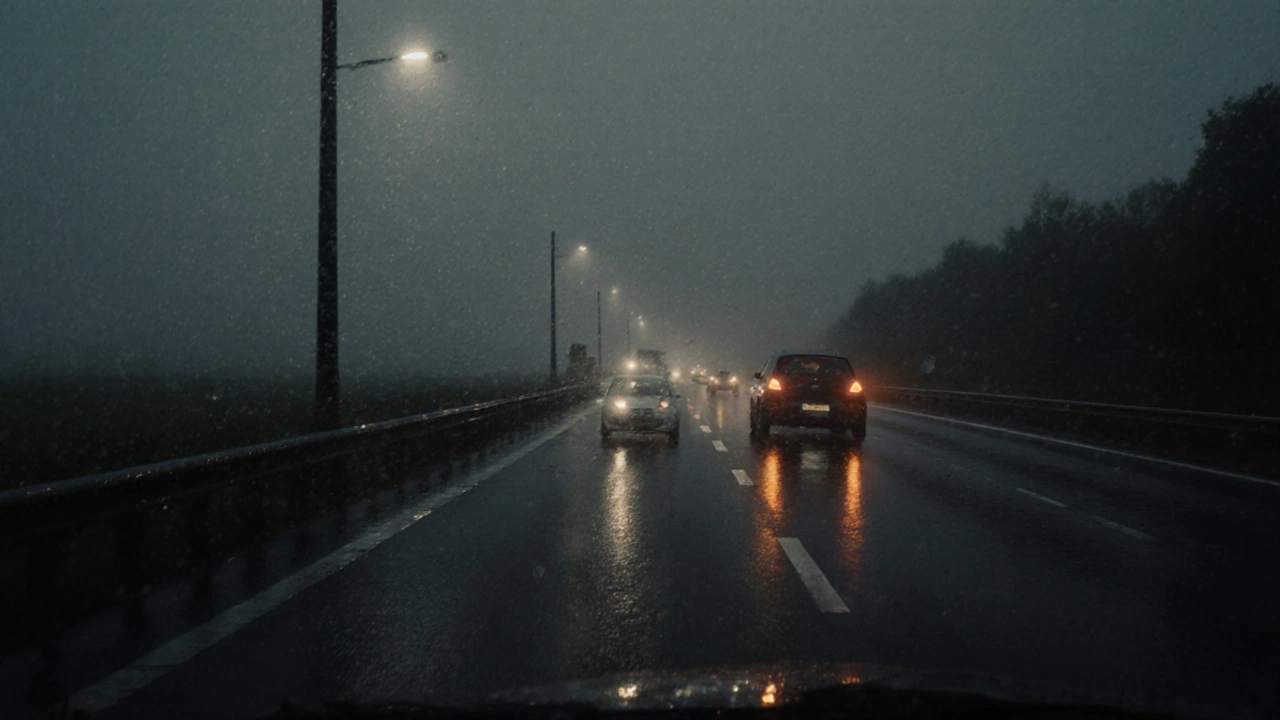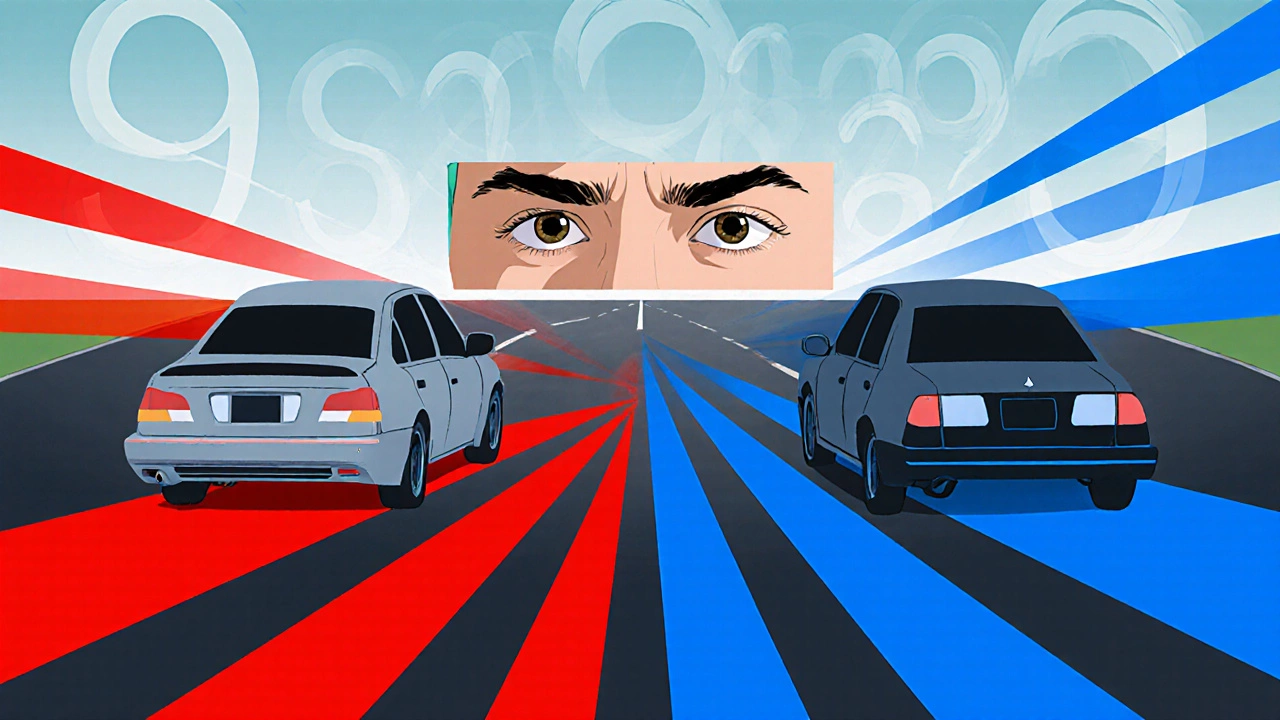Safe Following Distance Calculator
Calculate Your Safe Following Distance
Enter speed and conditions to see your safe distance
meters
Tip: This is the minimum safe distance. Always adjust based on your driving conditions.
Ever sat in the driver’s seat and wondered how close is too close to the car ahead? You’re not alone. Most new drivers guess it-until they learn the 3-second rule. It’s not magic. It’s not complicated. It’s the simplest, most reliable way to avoid rear-end crashes-and it’s a must-know for your driving test.
What Exactly Is the 3-Second Rule?
The 3-second rule is a guideline that tells you how much space you should keep between your car and the one in front of you. You pick a fixed object on the road-a sign, a tree, a lamppost. When the car ahead passes it, you start counting: "One-thousand-one, one-thousand-two, one-thousand-three." If you reach that same object before you finish counting, you’re too close.
It sounds basic, but it works because it accounts for reaction time. Humans need about 1.5 seconds just to see a hazard and start braking. Another 1.5 seconds to actually slow down. That’s 3 seconds total. If you’re following closer than that, you’re driving blind to what’s ahead.
Why Do Driving Examiners Care About It?
During your driving test, the examiner isn’t just watching if you stop at red lights or signal properly. They’re watching how you manage space. Failing to maintain a safe following distance is one of the top reasons people fail their practical test in New Zealand, the UK, Australia, and the US.
Why? Because tailgating doesn’t just look bad-it’s deadly. In 2024, the New Zealand Transport Agency reported that 22% of all crashes on highways involved insufficient following distance. That’s more than speeding, more than distracted driving. And it’s completely avoidable.
Examiners know this. If you’re tailgating-even for a few seconds-they’ll mark you down. Not because they’re strict. Because they’ve seen what happens when people don’t leave room.
When the 3-Second Rule Isn’t Enough
Here’s the catch: the 3-second rule is the bare minimum. It works fine in dry weather, on clear roads, with good tires. But real life isn’t perfect.
- Wet roads? Double it to 6 seconds. Water reduces tire grip. Braking takes longer.
- Fog or rain at night? Go to 4-5 seconds. Visibility drops fast.
- Heavy traffic or stop-and-go? Stay at least 3 seconds, but keep your foot ready. Don’t let the car in front creep too close.
- Following a large vehicle like a truck? Add extra space. You can’t see what’s ahead of them. If they brake suddenly, you won’t have time to react.
- Driving a heavy vehicle or towing? Your stopping distance increases. Use 4-5 seconds minimum.
Think of the 3-second rule as a starting point-not a finish line. Good drivers adjust based on conditions. That’s what separates someone who passes the test from someone who drives confidently every day.

How to Practice the 3-Second Rule
You can’t learn this by reading. You need to feel it.
- Find an empty stretch of road-preferably a quiet highway or rural road.
- Set your cruise control at a steady speed, say 60 km/h.
- Watch the car ahead. When its back bumper passes a sign or pole, start counting.
- Don’t look at your speedometer. Just focus on the counting.
- Check: Did you reach the same sign before finishing "one-thousand-three"? If yes, slow down slightly and try again.
Do this for 10 minutes. Then try it at 80 km/h. You’ll notice how much more space you need at higher speeds. That’s the point.
Many driving schools now use dashcams to replay your following distance during lessons. If you’ve never seen yourself tailgating, you won’t believe how close you are. It’s eye-opening.
Common Mistakes New Drivers Make
Even after learning the rule, people mess it up. Here’s what goes wrong:
- "I’m a good driver, I can stop faster." You can’t. No one can react faster than 1.5 seconds under normal conditions. That’s physics, not skill.
- "The car behind me is too close, so I have to stay close to the one in front." That’s called "squeeze driving." It doesn’t help. You’re just creating a chain reaction. Stay your distance. Let the driver behind adjust.
- "I’m just waiting for a gap to change lanes." Don’t use the space in front of you as a buffer for lane changes. That’s how rear-enders happen. Wait until you have a safe gap, then move.
- "I only need 2 seconds-I’m paying attention." Attention doesn’t replace physics. A child running into the road, a sudden brake light, a patch of oil-all happen in less than a second.
The 3-second rule isn’t about being perfect. It’s about being predictable. Other drivers rely on you to keep a safe gap. If you do, they can plan their moves too.

How This Rule Saves Lives
In 2023, a study by the University of Auckland tracked 1,200 new drivers over six months. Those who consistently used the 3-second rule had 68% fewer near-misses than those who didn’t. That’s not a small difference. That’s life-changing.
And it’s not just about you. If you’re driving safely, you’re protecting the person behind you too. If you brake smoothly and leave room, you give them time to react. You become part of a safer system.
On New Zealand roads, where weather changes fast and rural roads are narrow, this rule isn’t optional. It’s survival.
What Happens If You Ignore It?
Ignoring the 3-second rule doesn’t just cost you your driving test. It costs lives.
Every year in New Zealand, over 1,500 people are injured in rear-end crashes. About 20 of them die. Most of these crashes happen at speeds under 70 km/h. Not high-speed chases. Not drunk driving. Just someone following too closely.
And the financial cost? Insurance claims for rear-end collisions average $12,000 per incident. That’s a new engine, a new transmission, maybe a new car.
It’s not worth the risk. Not for you. Not for anyone else on the road.
Final Tip: Make It a Habit
The 3-second rule isn’t something you use only during your test. It’s something you use every time you drive. After your test, you’ll still need it. In traffic. On the motorway. In the rain. At night.
Start making it automatic. When you get in the car, say to yourself: "Three seconds." Then count. Don’t think about it. Just do it.
Over time, your brain will do it without you even noticing. That’s when you become a truly safe driver-not because you passed a test, but because you care enough to keep space between you and danger.
Is the 3-second rule the same in all countries?
Yes. The 3-second rule is used in New Zealand, Australia, the UK, Canada, the US, and most European countries. It’s based on human reaction time and physics, not local laws. Some places recommend 4 seconds in bad weather, but the base rule is universal.
Can I use the 2-second rule instead?
The 2-second rule is sometimes taught as a simplified version for beginners, but it’s not enough for real-world driving. Two seconds leaves almost no room for error. Most driving authorities, including NZTA, recommend 3 seconds as the minimum. Stick with 3.
Does the 3-second rule apply when I’m stopped at a red light?
No. The rule is for moving traffic. When stopped, you should leave enough space to see the tires of the car ahead touching the ground. That’s about 1-2 meters. This gives you room to maneuver if the car in front stalls or rolls back.
What if the car in front is driving too slowly?
Keep your 3-second gap anyway. Don’t tailgate just because they’re going slow. If you need to pass, wait for a safe, legal opportunity. Tailgating a slow driver is just as dangerous as tailgating a fast one.
How do I know if I’m following too closely without counting?
Use the "tire rule." If you can see the bottom of the tires of the car ahead, you’re too close. If you can see the road between their tires and your hood, you’re probably safe. It’s a quick visual check you can use while driving.

